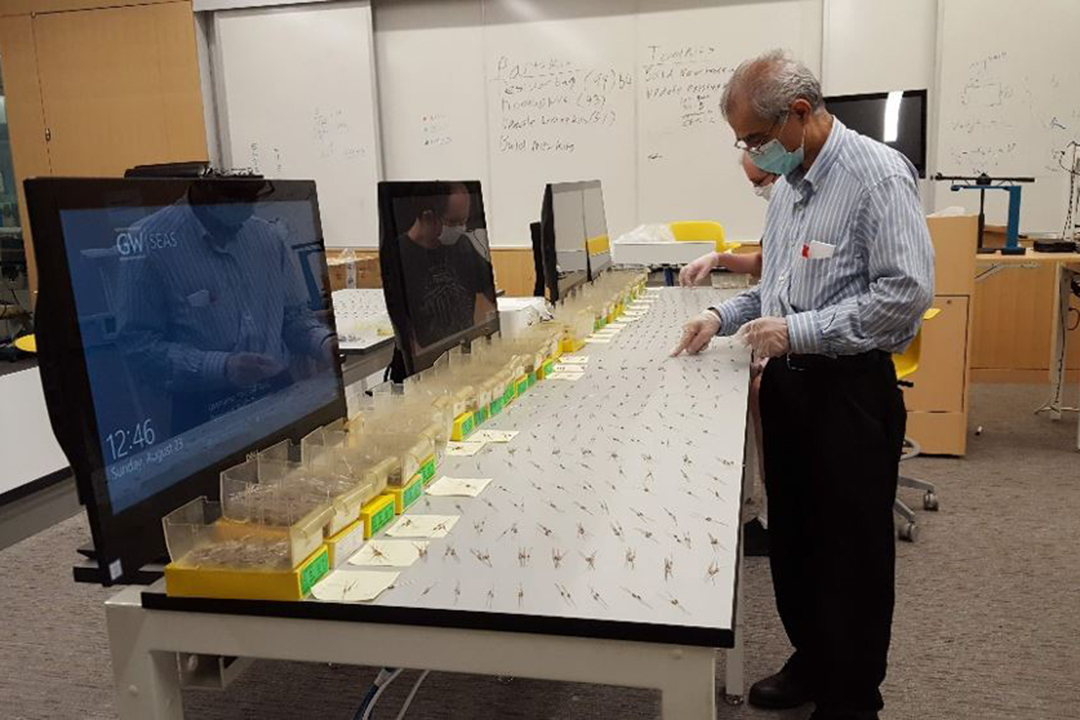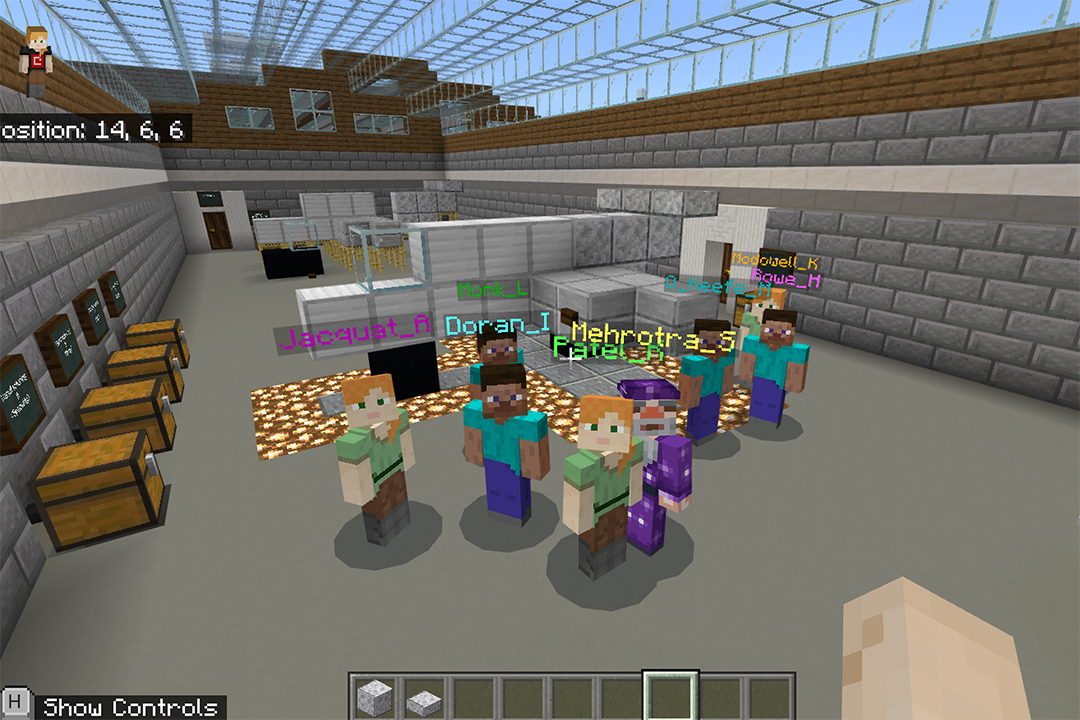By Kristen Mitchell
When George Washington University committed to virtual learning last year, the School of Engineering and Applied Science’s Department of Electrical and Computer Engineering was faced with a challenge—how to incorporate hands-on experiments into remote coursework.
With a mandate from SEAS Dean John Lach that students learning during the COVID-19 pandemic should receive the same high-quality instruction and experiences as those who came before them, faculty members set out to make it happen. “Uncompromised Quality with Resilient Inclusion” became their call to action.
“Teaching online is one thing, but doing the labs is a completely different challenge,” said Suresh Subramaniam, ECE department chair and professor.
Over the summer a team of faculty began researching best practices for online labs, which included labs done in the virtual environment and remote options to control existing equipment in Science and Engineering Hall. Ultimately they determined a “personal lab” model, where the university provides personal devices for each student, would give both students and faculty the most flexibility for learning. They devised the idea to build a kit that would include everything a student would need to participate fully in their coursework for multiple engineering courses away from Foggy Bottom.
Teaching Professor Shahrokh Ahmadi was at the forefront of the team assembling the kit, which included purchasing and testing compact, portable computing devices, resistors and other components during a time when global production had slowed and demand was high. Dr. Ahmadi scoured eBay, buying a handful of computing devices such as the Analog Discovery 2 (AD2) when they became available so that faculty could test the product and begin redesigning their course labs. The department was able to secure a large number of these devices from the manufacturer, despite production challenges, and other parts by the start of the fall semester in August.
Once the components were secured, students placed orders for the materials they would need for class through a new online portal. They filled their virtual shopping carts with the AD2, laboratory part kits, tool kits, digital multimeters and more, and behind the scenes the ECE team spent long hours assembling orders by hand and shipping them to students around the world before the start of the academic year. More than 380 packages were shipped to students in 15 classes for the fall 2020 and spring 2021 semesters.
Every kit includes a few extra parts to ensure that students would be able to continue their coursework if a small component, like a resistor, burnt out part way through the semester—the way IKEA might throw in a few extra screws with a new piece of furniture, Dr. Subramaniam said.
Dr. Ahmadi said the department effectively rose to the challenges of virtual learning, making investments that will enhance ECE education at GW for years to come.
“We truly took this challenge and looked at it as an opportunity,” he said. “This has given us an opportunity to really revolutionize or upgrade in a very extreme way with the latest technology. In every aspect of the laboratories, we are using cutting-edge technology.”
Students are now able to complete assignments from home that would have previously required them to go to the lab. After in-person instruction returns, these tools will still enable students to make progress on their coursework without jockeying for in-person lab space. Software that used to only be available in the lab is now on a cloud server, accessible anywhere in the ECE Virtual Lab. The department created a new YouTube channel with video instructions for each lab, making it easier for graduate teaching assistants to prepare for class. Students also will be able to pay for future course materials using the new online portal designed for virtual learning. Previously students were required to pick up materials in-person and pay with a check.
SEAS also is working on recreating the Nanofabrication and Imaging Center’s cleanroom in the virtual space, Dr. Subramaniam said, enabling students to view and operate equipment needed to fabricate chips.
Maria DePasquale, a sophomore in electrical engineering, said having remote access to portal lab equipment and software has enabled her to complete assignments and stay on schedule to graduate. She completed the fall semester from her home near Pittsburgh, Pa.
“Having access to lab equipment was, by no exaggeration, in all ways essential to my continued learning this past semester,” she said.
The successful transition to virtual learning opens up new possibilities for the future of electrical and computer engineering education, Dr. Subramaniam said. It’s possible that someday there may be opportunities for GW students to complete ECE undergraduate degrees online.
“This experience has basically taught us that it’s doable,” he said. “Of course there’s the campus experience, and that’s a different issue. But in terms of actually delivering the class, it’s possible to do it.”



